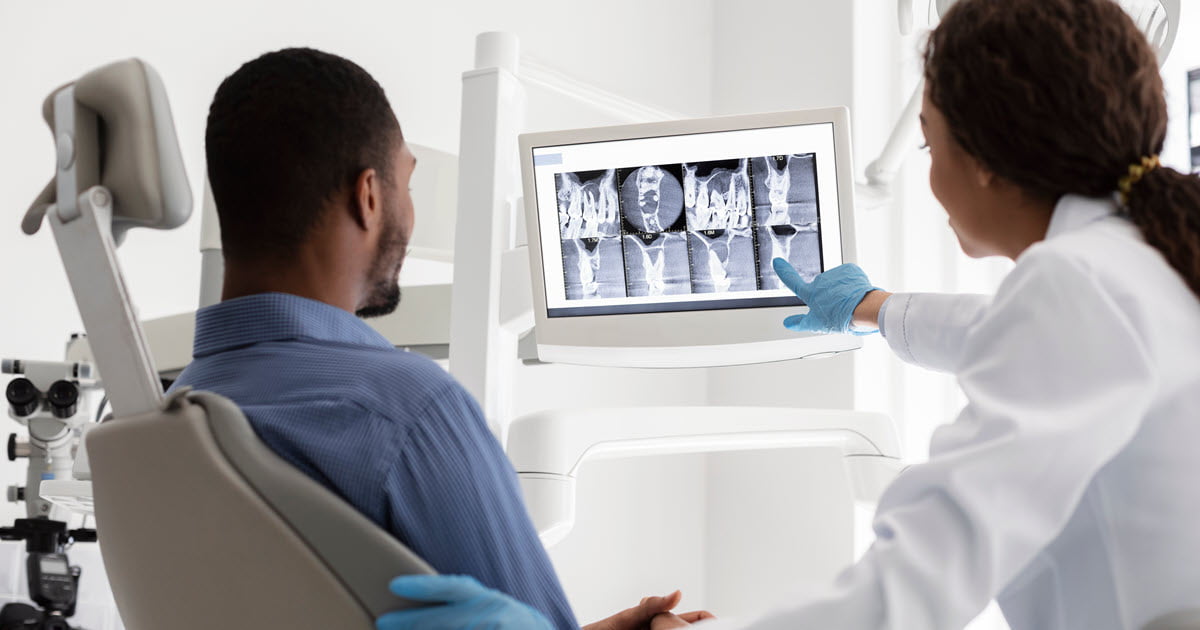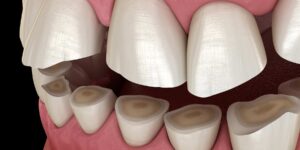
May is Save Your Tooth Month and, this year, we are highlighting the role our endodontists play in helping patients SAVE their natural teeth.
Keeping Natural Teeth
Natural teeth allow you bite and chew, but they also retain bone structure in the jaw and face. Oftentimes, tooth decay is a leading cause of lost teeth.
It all begins with oral bacteria growing rapidly in deposits of dental plaque, and in turn producing high levels of acid in the mouth. Excessive acidity can erode the minerals in tooth enamel to create holes or “cavities” that allow bacteria to enter a tooth and infect it.
If at all possible, we need to try to stop tooth decay early by disinfecting and filling these cavities. If not, decay can spread through the teeth to the underlying nerve (pulp) tissue, following passageways known as root canals. If this happens, the chances for saving the tooth are extremely low.
But if the decay does reach the tooth’s innermost layer—the pulp—filling the cavities won’t be enough. Decay this advanced requires a procedure known as root canal.
How a Root Canal Can Save Your Tooth
If you winced a little at seeing “root canal”, it’s understandable. Root canals have gained an unfair reputation as an unpleasant experience. In reality, a root canal performed by a skilled dentist or endodontist (a specialist in root canals) isn’t painful. In fact, if you come in with a painful tooth, you’re very likely to leave after the procedure with a significant pain reduction.
Root canal procedures can vary depending on the type of tooth and the intricacy of its root canal network. Essentially, though, we remove the diseased pulp tissue, and then clean and fill the empty pulp chamber and root canals. This stops the infection and, along with sealing and crowning the tooth, helps prevent a future re-infection.
Root Canal Procedure
Do I need a Root Canal?
How do you know if you need a root canal? You may find out from us if we discover advanced decay during a checkup or cleaning appointment. But you may encounter signs yourself like a throbbing toothache, pain during and after eating and drinking, or gum tenderness around a tooth. These are all possible indications of tooth decay.
If you experience any of these signs, you should see us as soon as possible for an examination. If the pain subsides, keep your appointment anyway—this could simply mean the nerves in the pulp have died and are no longer transmitting pain signals. The infection, though, could still be there and continuing its rampage beyond the tooth and into the surrounding bone tissue.
Root canal therapy may not seem glamorous, but it’s an excellent option for a diseased tooth that would otherwise have to be removed. A root canal could get rid of your pain and give your troubled tooth a new lease on life!
If you have a natural tooth compromised by infection or injury, you may believe that extraction is your only solution. However, many compromised teeth can be saved by endodontic treatments such as root canals or other more complex procedures.
Celebrating Dr. Nicholas Anders
We are fortunate to have our own endodontist on staff. Dr. Nicholas Anders is one of the only board certified endodontists in the Madison area. His commitment to patient comfort and high quality care sets him apart. He was named a Top Dentist in Madison Magazine and continues to advocate for patients to save their teeth. He practices out of our South Clinic location in Fitchburg.





